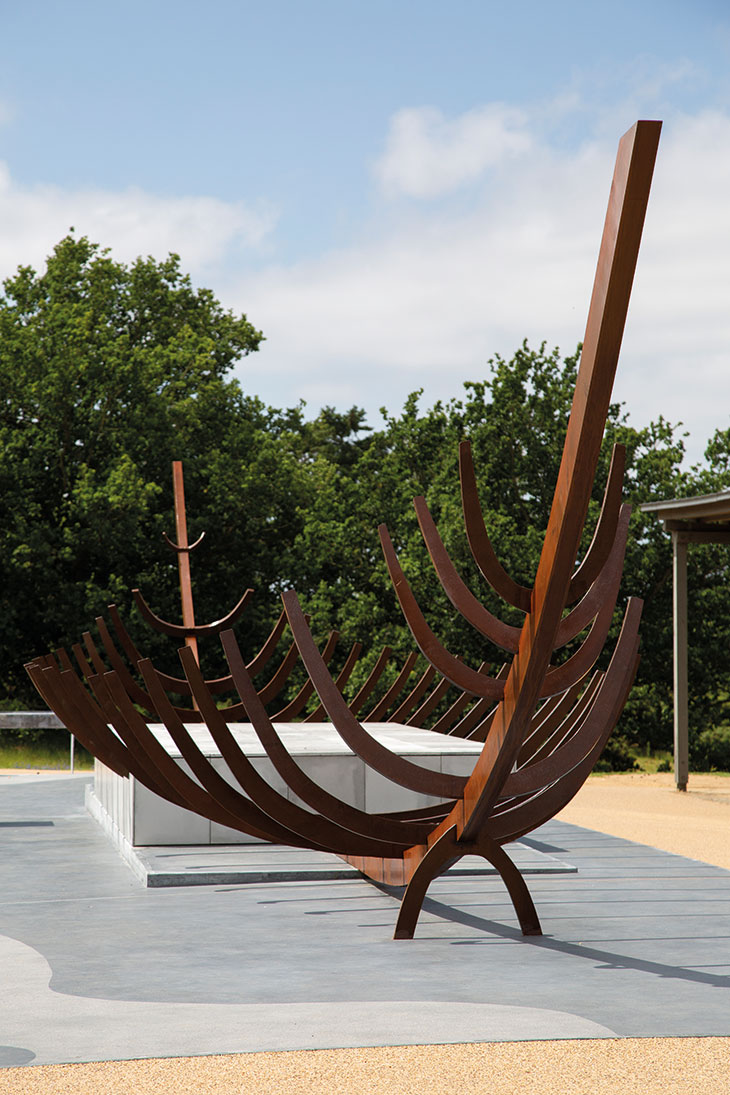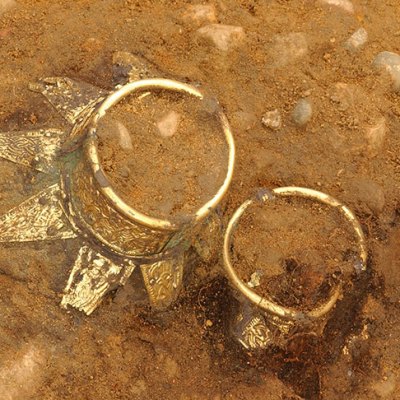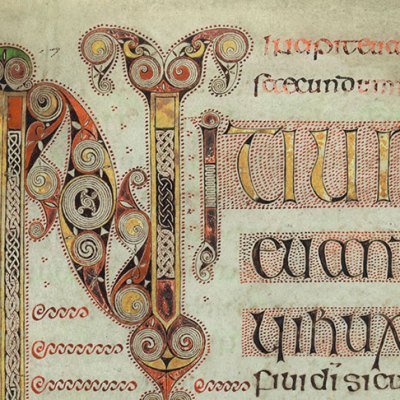Sutton Hoo is rightly famed as one of Europe’s great archaeological discoveries. The burial of an Anglo-Saxon king in an ocean-going ship, accompanied by fabulous wealth, astounded the public and scholars alike when excavated in 1939. Since then, the site has been a place of pilgrimage for early medievalists and, after it was given to the National Trust in 1998, a destination for the wider visiting public. Any such venue needs constantly to refresh; this is particularly problematic for Sutton Hoo, since the site’s magnificent finds are now some of the star attractions at the British Museum, some distance away in London: hence the £4m redevelopment that has just been completed. The changes at the reopened site are palpable. A new ticket office allows one to choose whether to access the site itself, visit the cafe or look at the two exhibition areas – the old visitor centre, now renamed the High Hall, and Tranmer House, the family home of Edith Pretty (1883–1942), who commissioned the original excavations in 1938 and 1939.
The centrepiece of the new development, between the ticket office and the cafe/shop, is what the blurb describes as a ‘full-size sculpture of the burial ship’, sitting atop a stone plinth. This is actually a stylised portrayal of the ribs and keel of the Mound One ship, using Corten rusted metalwork. It is most striking in showing just how large the vessel was, and what a remarkable burial container. In contrast, the High Hall is more problematic in its interpretation. Redevelopment projects such as this require an enormous amount of consultation and stakeholder engagement, so the National Trust will know what its typical visitor wants better than I do. Here, though, we encounter an uncomfortable tension between an attempt to enter the world of the early Anglo-Saxons in general, and the particular story of Sutton Hoo (which in this iteration of the exhibition is largely the story of Mound One).
A ‘full-size sculpture’ of the Anglo-Saxon burial ship from Mound One, Sutton Hoo, installed as part of the redevelopment of visitor facilities and exhibition spaces at the site. Photo: © Phil Morley

Entering the High Hall, the visitor is faced with a central circular space featuring a life-size floor plan of the Mound One burial chamber and the contents of the ship. High-quality replicas of various celebrated finds are mounted in cases in the walls. Outside this central hub, the visitor walks clockwise around the hall, encountering a series of figures intended to introduce us to the world of Sutton Hoo and the burial, beginning with the queen, a wise woman, and a slave girl, and then a craftsman and ‘the horseman’ – the person buried in Mound 17. More replicas of Mound One grave goods are interspersed with these, along with imagery and interactive elements, including some fetching Anglo-Saxon costumes to try on. The idea is to use Sutton Hoo as a prism through which to view Anglo-Saxon society, but too often there is not enough to put the site in context. The few original Anglo-Saxon artefacts – the fabulous horse-harness and other finds from the Mound 17 burial, and the Bromeswell Bucket, found near the visitor centre in the 1980s – ought to be highlights but are somewhat sidelined in a discourse focused upon the Mound One story. We are told little about the wider cemetery, the likely original splendour of the Mound Two ship burial, or the second Anglo-Saxon cemetery excavated on the site of the High Hall itself. These are serious omissions, which deprive the visitor of a great deal of information about what Sutton Hoo was as a site and how it fitted into the social and political geography of the time.
The second major new element of redisplay is Tranmer House, now refurbished to echo its occupants and their world at the time Basil Brown (1888–1977) was commissioned to explore the mounds at Sutton Hoo. This building provides a far more satisfactory exploration of the site, possibly reflecting the Trust’s greater familiarity with dealing with houses and the stories of their occupants. Here we learn about the discovery of the site, through contemporary news reports, photographs and, most immediately, through the recollections of several of the excavation team from 1939, seen in excerpts from The Million Pound Grave, a BBC documentary of 1965. The story is brought up to date in another room, with the voices of three people involved in present-day research at Sutton Hoo.
Edith Pretty (in a cane chair) observing the excavations at Sutton Hoo in 1939. Photo: © The Trustees of the British Museum

The visitor’s final duty is to pay homage to the site itself, a ten-minute walk away across the grassy heathland. Once again the tensions inevitable in presenting an archaeological site emerge: should it be left in a ‘natural’ state, or dotted with signs to inform and guide? Sensibly, the Trust has opted mostly for the former, although signs of previous work remain – notably the ‘reconstructed’ Mound Two in which the soil laboriously removed during its re-excavation (to which I can personally attest) was reinstated as part of an experiment to work out how high it would originally have stood and how long it might take to weather down to the size observed in the 1930s. The fibreglass casts of several ‘sand bodies’ excavated in the 1980s are likewise still to be found in their wooden protective cases, as illustrative material for guided tours.
Fittingly, Mound One is one of the last barrows one comes to, roped off like Mound Two but with a slightly incongruous wrought-iron prow sticking up from one edge, apparently to show where the ship originally lay. A 17m-high observation tower will provide an unprecedented, elevated view across the site, but it was still under construction when I visited. I will certainly be back when it opens – and I suspect that I won’t be alone.
Sutton Hoo, near Woodbridge, Suffolk, reopened on 5 August.
From the November 2019 issue of Apollo. Preview and subscribe here.



